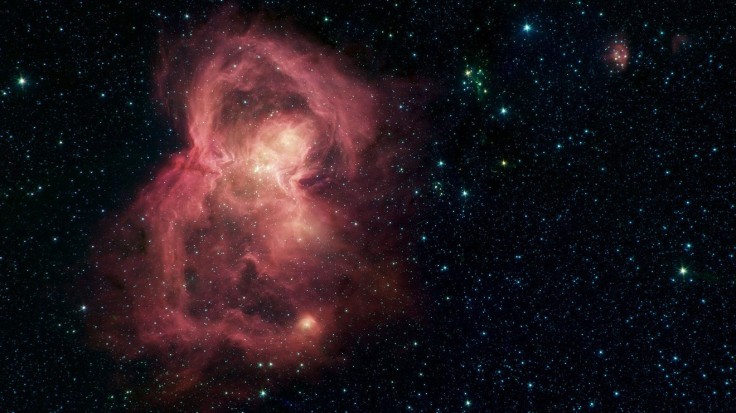The Butterfly Nebula has been captured in an awe-inspiring image taken by the Spitzer Space Telescope of the National Aeronautics and Space Administration (NASA).
The nebula is officially known as Westerhout 40 or W40 and it is located around 1,400 light-years away from the sun.
The telescope that took the image is part of NASA's Great Observatories Program, which the Hubble Space Telescope is also a part of.
Butterfly Nebula Image Taken by NASA's Spitzer Space Telescope

The Butterfly Nebula, officially known as Westerhout 40 or W40, features in a stunning image taken by NASA's Spitzer Space Telescope.
According to a statement posted by NASA's Jet Propulsion Laboratory (NASA JPL), "The Spitzer picture is composed of four images taken with the telescope's Infrared Array Camera (IRAC) during Spitzer's prime mission, in different wavelengths of infrared light: 3.6, 4.5, 5.8 and 8.0 ?m (shown as blue, green, orange and red)."
"Organic molecules made of carbon and hydrogen, called polycyclic aromatic hydrocarbons (PAHs), are excited by interstellar radiation and become luminescent at wavelengths near 8.0 microns, giving the nebula its reddish features," the statement further explains.
Related Article : NASA Spitzer Telescope Captures First Objects Post-Big Bang
Butterfly Nebula or Westerhout 40
The Butterfly Nebula is located around 1,400 light-years away from the sun, according to a report by Space. The report further states that its distance is roughly around the same as the Orion Nebula. However, the Butterfly Nebula is located in the opposite direction.
NASA JPL says that the nebula has two "wings" that are actually "giant bubbles of hot, interstellar gas blowing from the hottest, most massive stars in this region."
These wings are made up of material ejected from the cluster of stars located between the wings seen in the image. The hottest one of these stars, which also happens to be the biggest one, can be found near the center.
Spitzer Space Telescope
NASA's Spitzer Space Telescope is part of the space agency's Great Observatories Program, which is comprised of four observatories. Aside from the Spitzer Space Telescope, the Chandra X-Ray Observatory, Compton Gamma-Ray Observatory, and the Hubble Space Telescope are part of the program.
According to NASA, the Spitzer Space Telescope is meant to detect infared radiation. It is made up of two components: the Cryogenic Telescope Assembly and the spacecraft.
The Cryogenic Telescope Assembly contains the telescope that the spacecraft controls, along with three scientific instruments. Aside from controlling the telescope, the spacecraft is also responsible for powering up the instruments as well as communicating with Earth.
The Spitzer Space Telescope was launched in 2003 and was in service for 16 years, according to the report by Space.
Its Spitzer mission was ended by NASA on January 30, 2020. Its decommissioning was due, in part, to the launch of the James Webb Space Telescope, which is also an infrared observatory.
It is currently on its remaining mission, which has been named the "Spitzer Final Voyage."









